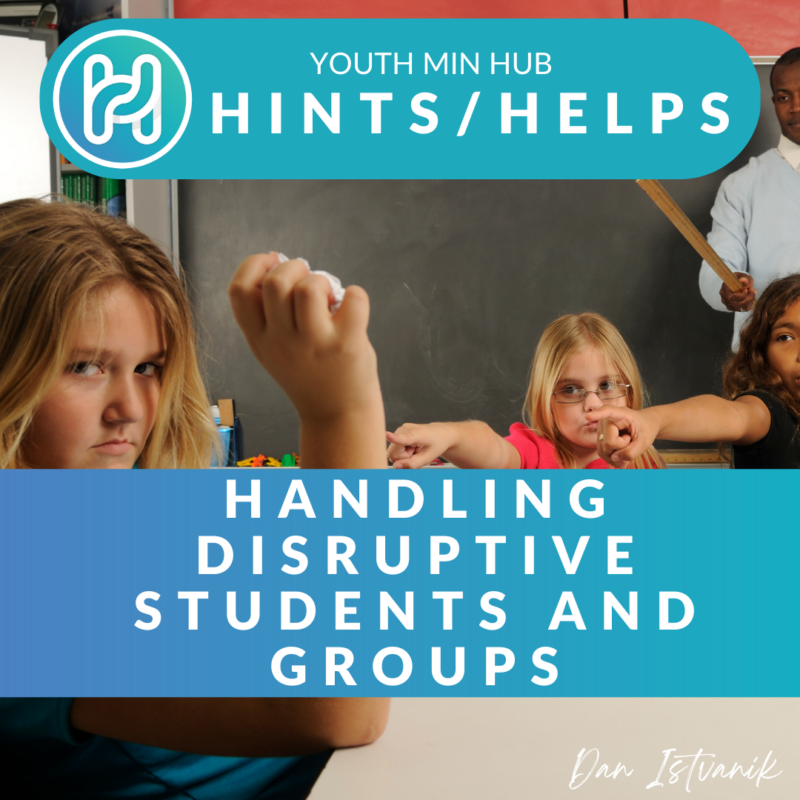Uncategorized, Youth Ministry Hints, Youth Ministry Thoughts
Handling Disruptive Student Groups
Handling a disruptive youth group can be challenging, but with the right strategies, you can turn those challenges into opportunities for engagement and growth.
Here are FIVE tips for teaching a disruptive group in a way that keeps them interested and respects their energy.
1. Set Clear Expectations and Boundaries
Start by clearly defining your expectations for behavior, participation, and respect. Be consistent and fair with these rules, but also communicate them in a positive, encouraging way. Rather than focusing on what they can’t do, emphasize what respectful engagement looks like and why it benefits everyone. Reinforce these expectations regularly, especially at the start of each session.
2. Use Active Learning and Interactive Techniques
Disruptions often happen when students feel bored or disconnected. Combat this by using interactive techniques—think of group activities, role-playing, or team challenges. Break up long teaching segments with discussions, hands-on activities, or even small games. Moving around the room or splitting into smaller groups can help keep everyone engaged and limit opportunities for side conversations or distractions.
3. Acknowledge and Redirect Positive Energy
Often, disruptive behaviors are the result of high energy levels rather than intentional disrespect. Instead of viewing this energy as a problem, try redirecting it into something constructive. If a student is talkative, invite them to help lead a discussion or share their thoughts with the group. This approach validates their voice and helps them focus their energy in a more structured way.
4. Incorporate Personal Connection and Empathy
Take time to connect with each student on a personal level, even if it’s just a quick check-in before or after the session. Understanding what’s going on in their lives outside of youth groups can give you insight into the root causes of their disruptive behavior. Showing genuine interest in their well-being can often build trust and make them more willing to respect the group’s time and purpose.
5. Don’t Be Afraid to Pause and Reset
If disruptions are derailing the entire session, it’s okay to pause, address the group, and reset. Remind them of the goals and the importance of respect. Sometimes, acknowledging the behavior without harshness is enough to recalibrate the energy in the room. Keep a calm, steady demeanor, and avoid becoming visibly frustrated—modeling patience can often have a calming effect on the group.
Using these tips, you can transform a disruptive group into one that’s lively, engaged, and respectful. Keeping their unique energy in mind while setting boundaries and connecting with them personally will go a long way in creating a positive learning environment.




